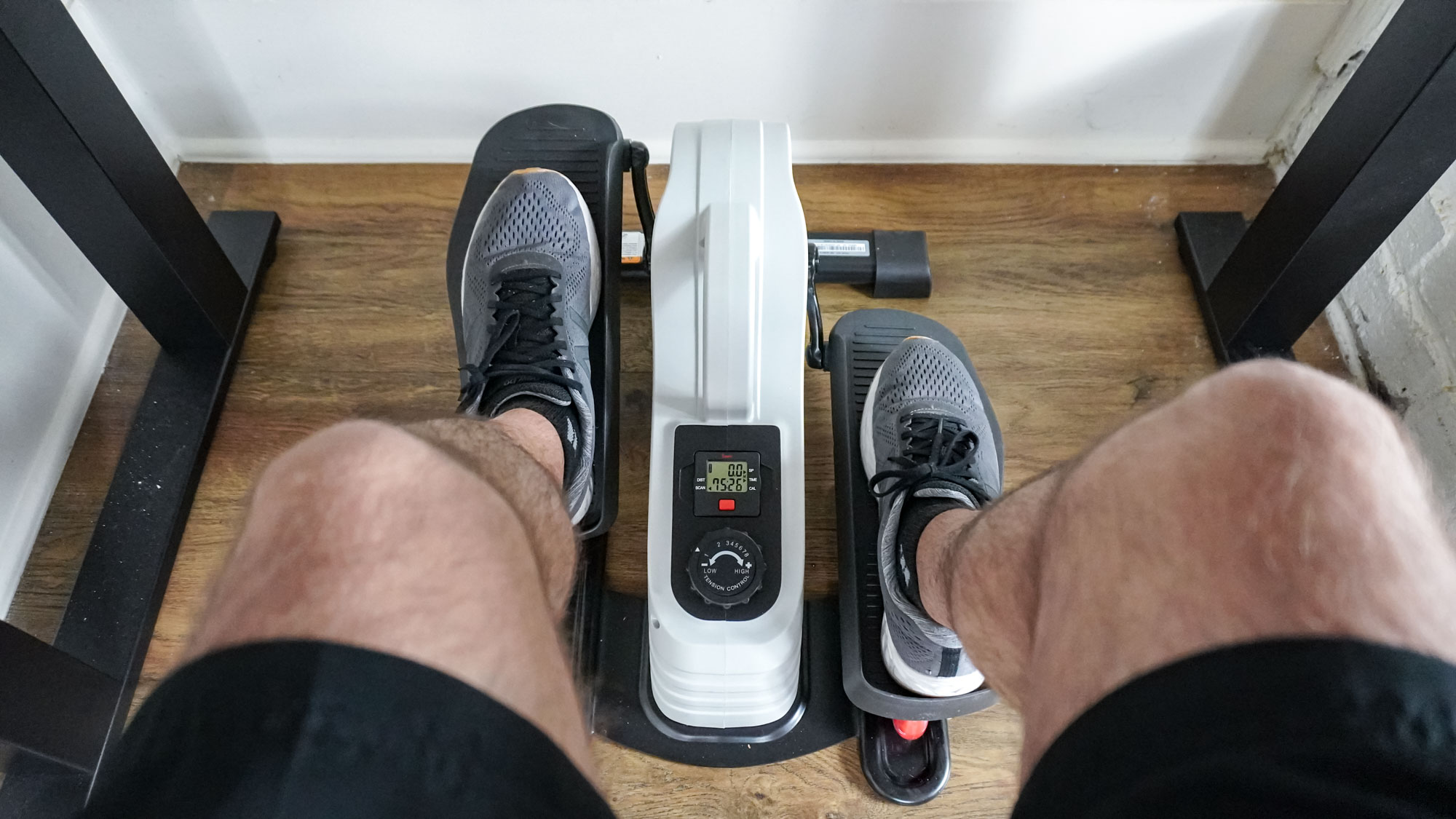Tom's Guide Verdict
A number of bizarre design elements make the Corsair K83 Wireless much more difficult to use than it needs to be.
Pros
- +
Comfortable keys
- +
Versatile
- +
Long battery life
Cons
- -
Unnecessary joystick
- -
Too expensive
- -
No way to reprogram keys
Why you can trust Tom's Guide
The Corsair K83 Wireless ($100) is an experiment, and like most experiments, it's not completely successful. The keyboard is part of the burgeoning genre of entertainment keyboards, which connect effortlessly with computers, mobile devices, smart TVs, streaming players and pretty much anything else with Bluetooth connectivity. It's an interesting idea with some potential for smart TV fans, but no entertainment keyboard has yet proven itself to be indispensable, and the K83 is no exception.
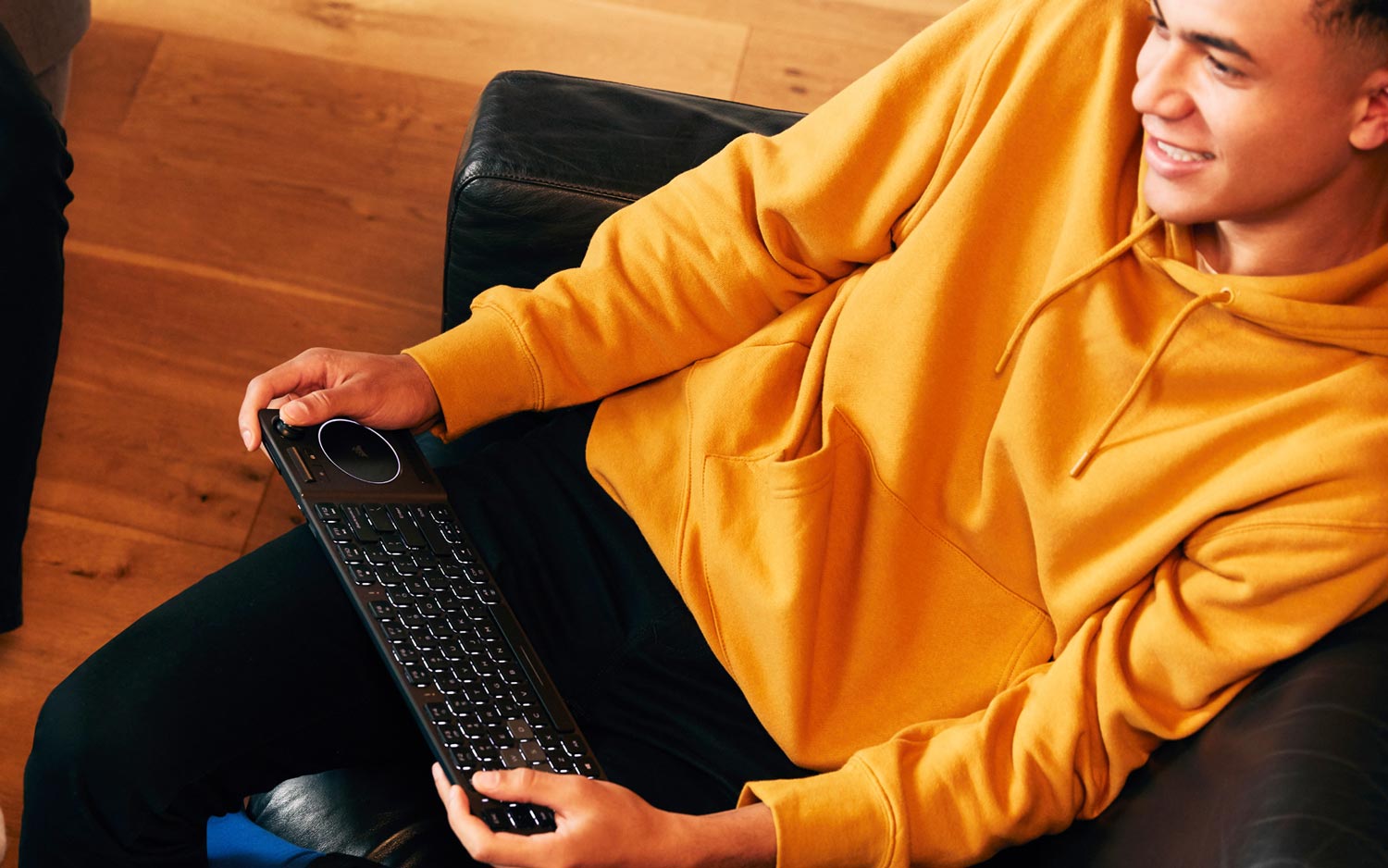
Design
The K83 is about two-thirds tenkeyless keyboard and one-third touchpad. On the left, there's a keyboard that stops just shy of the navigation keys on a full-size peripheral. On the right, there's a circular touchpad with a right and left button just beneath it. Above the touchpad, there's a button for backlighting, a button to lock the function keys and a volume dial with a new press-to-mute feature. As always, I cannot say enough nice things about Corsair's volume dials, with their pleasant textures and simple designs.
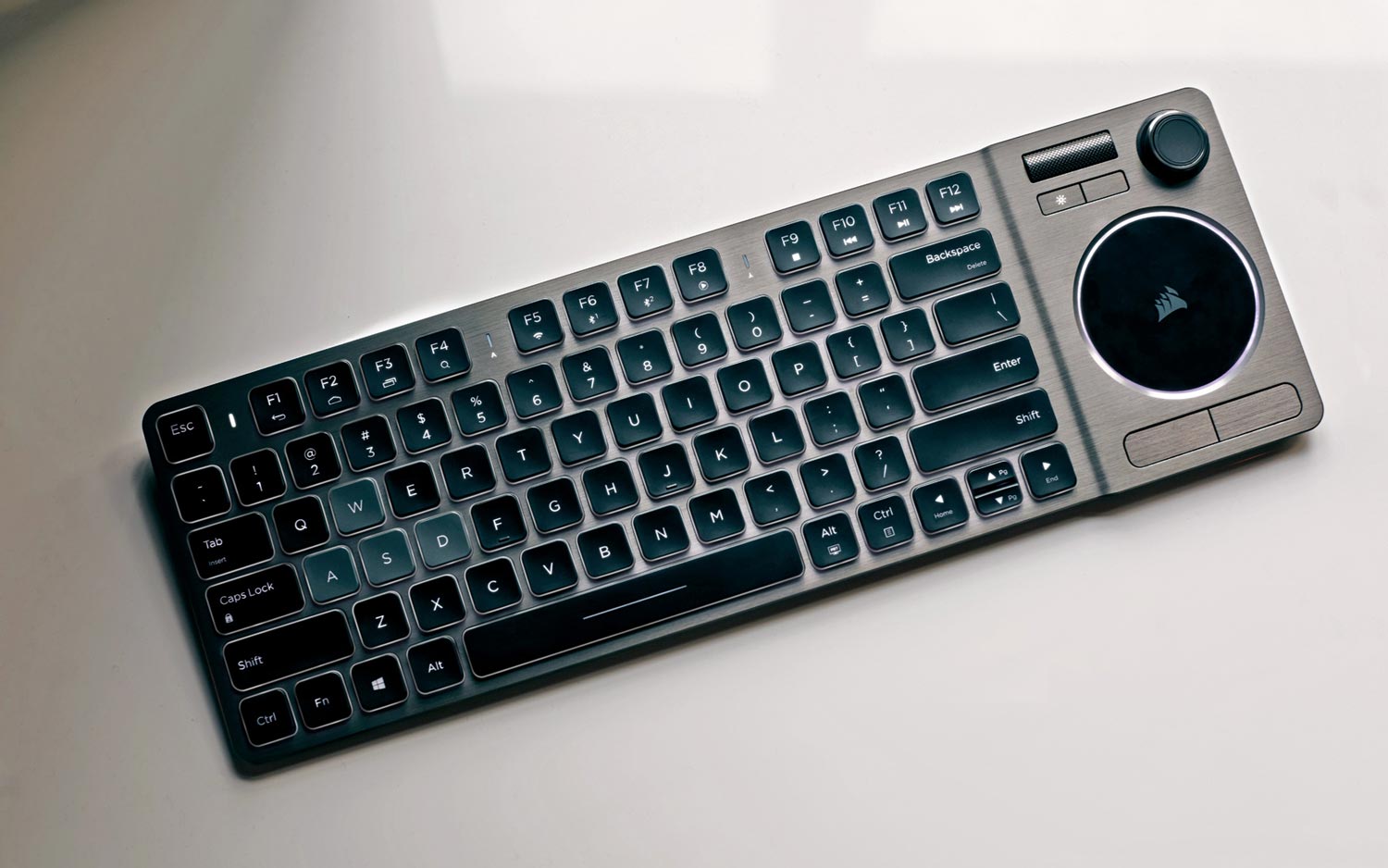
On the upper-right side, you'll find the keyboard's oddest feature: a joystick. The K83 wants to split the difference between a smart TV keyboard and a game controller. On its surface, this isn't the worst idea. Hooking the K83 up to a smart TV (this will work with Samsung brands or anything that runs on the Android TV or Fire OS), an Amazon Fire TV or an Nvidia Shield is very easy, and those devices offer plenty of games. In fact, if you pick the keyboard up (as Corsair recommends when controlling games with this keyboard), there's even a small bumper on the top of the keyboard and a larger trigger on the underside, marked L and R, respectively.
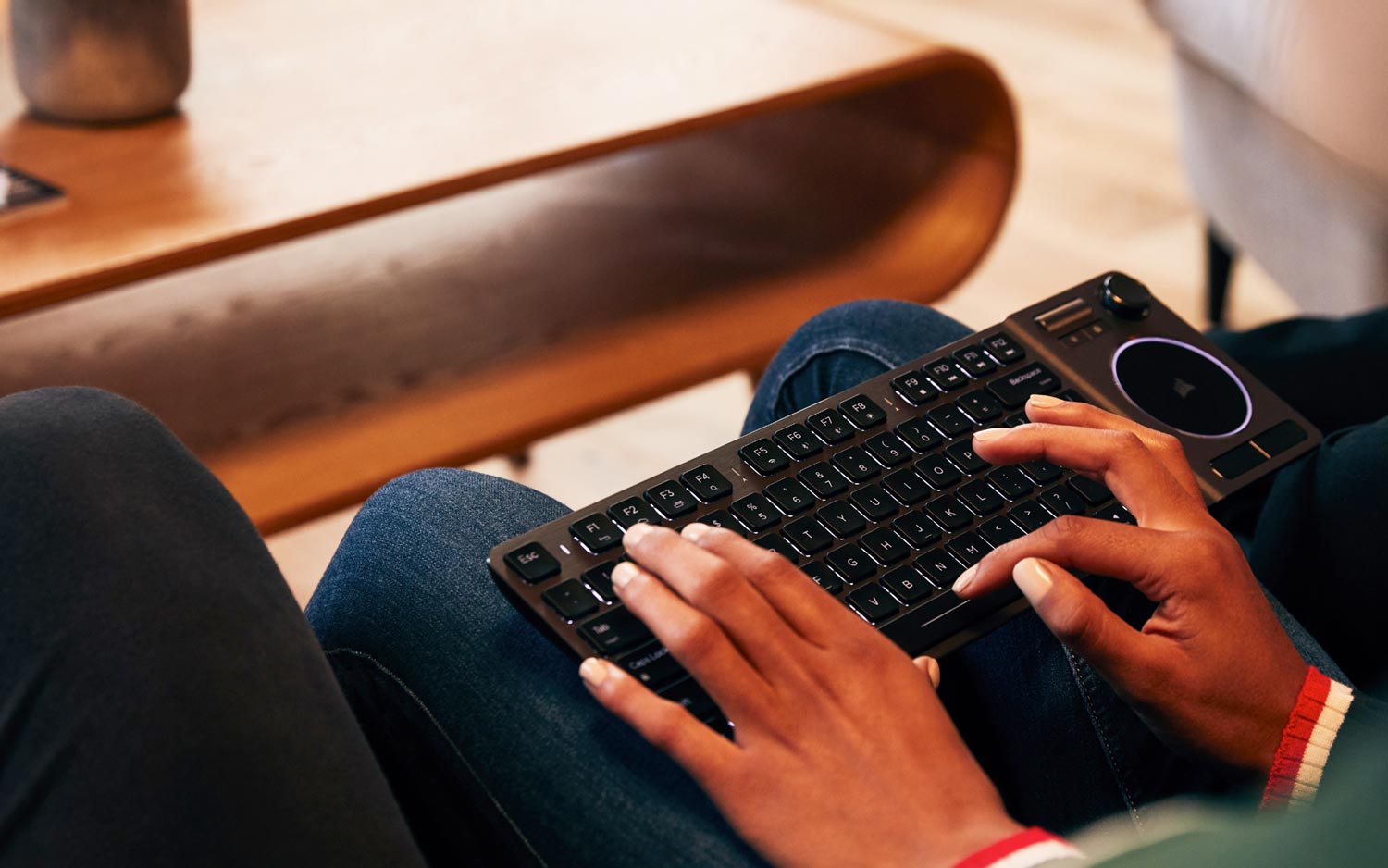
Between the joystick and the trigger buttons, the K83 aims to replicate a controller without forcing you to give up your keyboard and switch inputs. In theory, it streamlines input for devices that might need multiple control schemes, but in practice, it's more trouble than it's worth — but we'll get back to that.
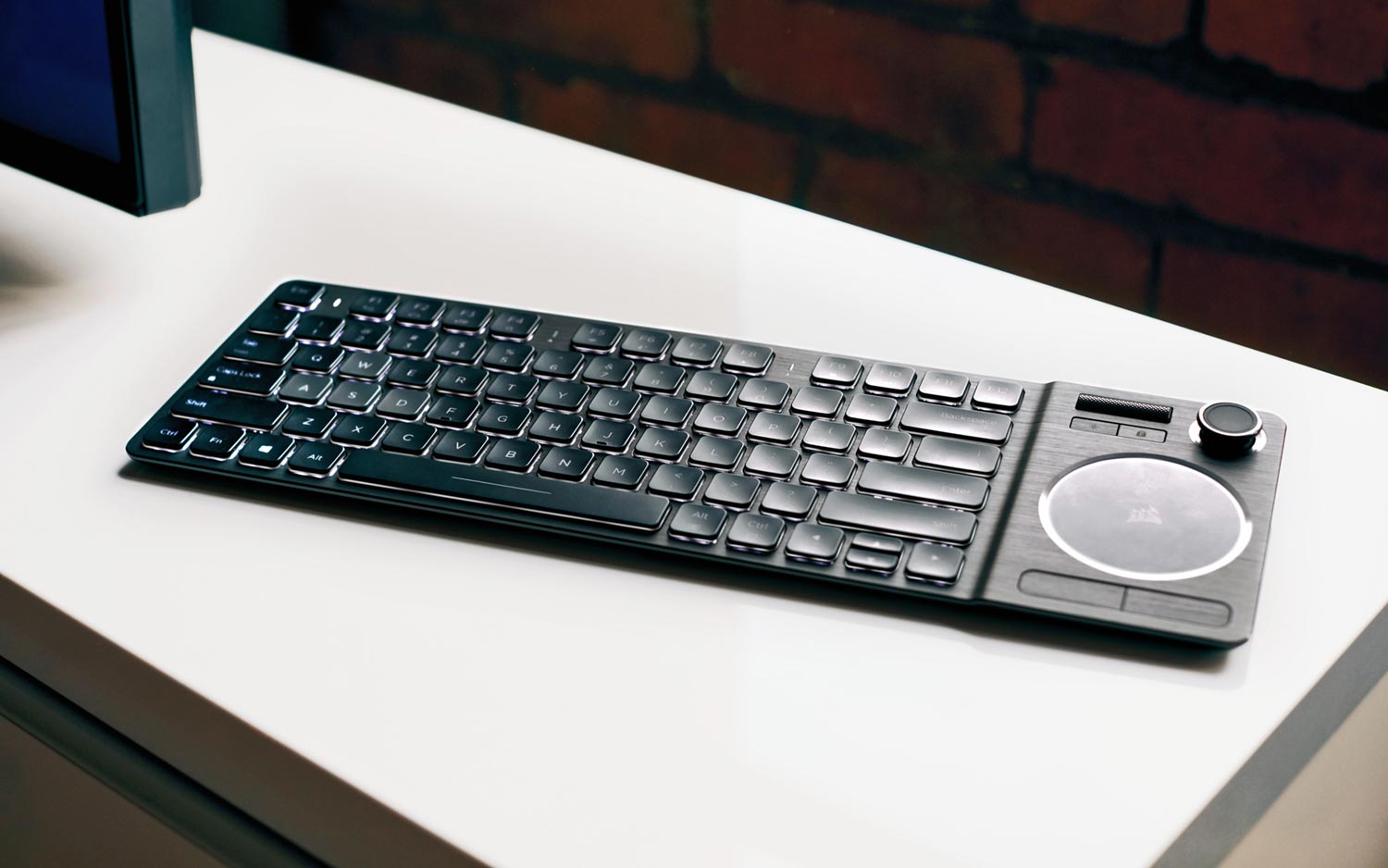
There's nothing remarkable about the rest of the keyboard. The up- and down-arrow keys are positively tiny, and the lack of a dedicated delete button slowly but surely drove me out of my mind. (There's a shift shortcut on the backspace, but any touch typist knows that's not the same thing.)
It's also worth noting that the K83 has much better keys than I've encountered in other media keyboards, like the Logitech K600. These keys are just mundane membrane models, sure, but they have more travel than I expected from such a thin keyboard and are large enough that my fingers rarely slipped. On the other hand, the keyboard has no feet, so you can't elevate it, leaving your wrists uncomfortably flat while you type.
Features
The K83 works with Corsair's iCUE software, which lets you adjust the monochromatic backlighting. That's about it. You can't reprogram any keys, although you can toy around with gesture controls (provided you disable Microsoft's built-in gesture controls first, which is a bit of a pain). You can also adjust touchpad sensitivity and toy around with the functions of the F-lock key, but compared to Corsair's line of gaming keyboards, the K83's options are surprisingly bare-bones. For a $100 keyboard, I expected a little more customization.
MORE: 12 Cheap PC Keyboards (Under $20) Ranked from Best to Worst
The wireless connectivity is also worth discussing, albeit only briefly, since everything works pretty well. There's a USB dongle and two Bluetooth connections; the keyboard also works in a wired USB mode. I hooked mine up to a computer via USB, an Amazon Fire TV via Bluetooth 1 and my cellphone via Bluetooth 2; I imagine most folks will take a similar approach.
Corsair estimates that the rechargeable battery lasts 40 hours, but I had no way to evaluate this as there is nowhere to check the battery life. The device had no issues during 10 hours of testing, so it'll take you through a few workdays at minimum.
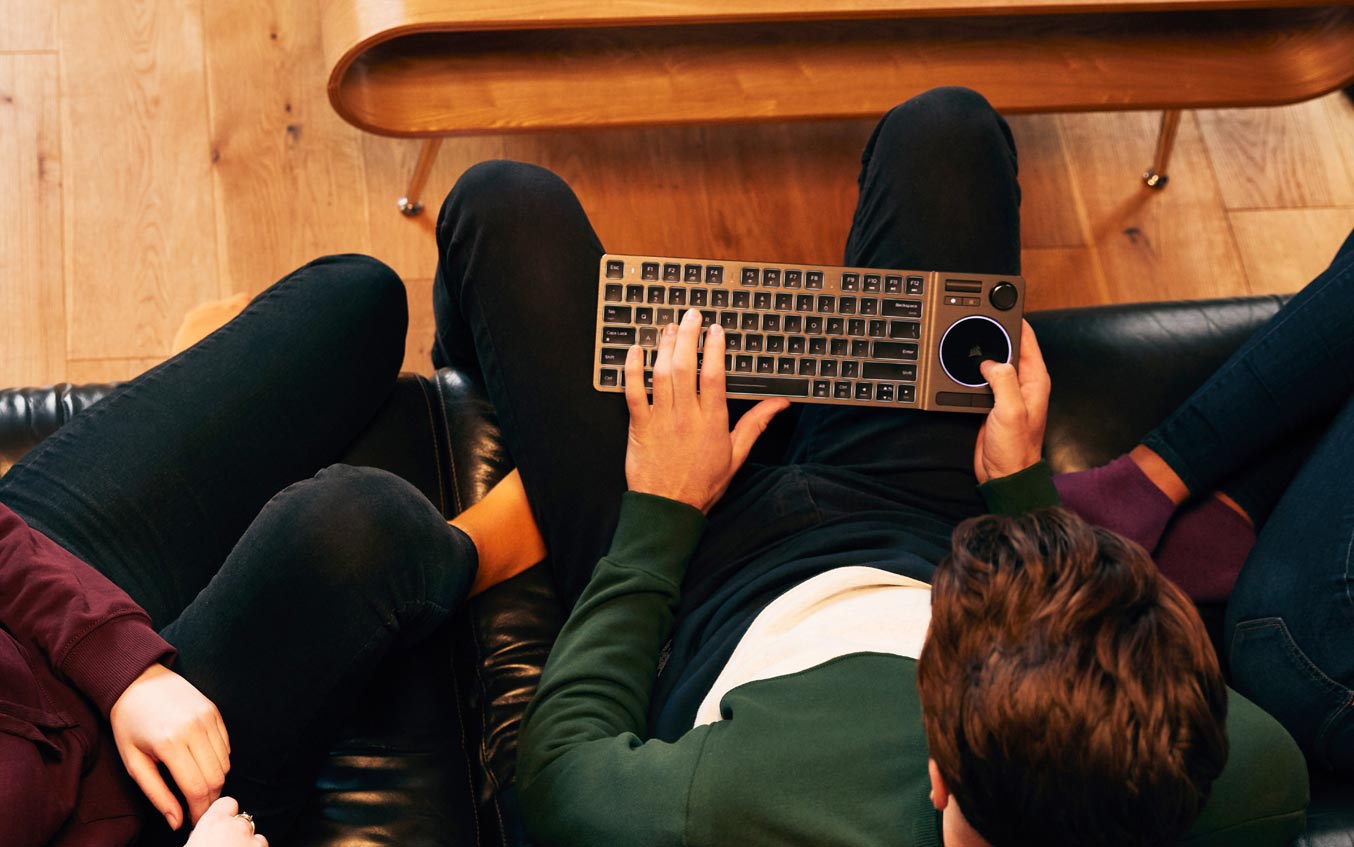
Far and away, the most interesting feature of the K83 is that it aspires to be a controller — sort of. When I hooked this keyboard up to the Fire TV, I jumped right into Sonic the Hedgehog and Shovel Knight, ready to get my game on without sacrificing the convenience of typing. (And make no mistake: It is extremely convenient to type usernames, passwords and search terms into streaming-video apps, even if it's not necessarily more convenient than a good voice search.)
When I couldn't make Sonic jump, though, I realized that the K83 has a few kinks to iron out. Yes, you can use its joystick and trigger buttons to play games — if, and only if those games recognize your input. Since you can't customize button commands, either in Windows or on other platforms, the K83 is only situationally useful. If your game doesn't control properly, there's not much you can do to make it work. Then, you're left with just a decent keyboard and a very, very expensive touchpad.
Performance
Questionable controller properties aside, the K83 works as advertised. It connects easily to just about any compatible device and types flawlessly, even from across the length of a living room. The smart TV/mobile buttons — including home, search and switch apps — work fine, as do the media keys. (I thought it was pretty cool that there's a dedicated Launch Media Player button, which knew my default program on each platform.)
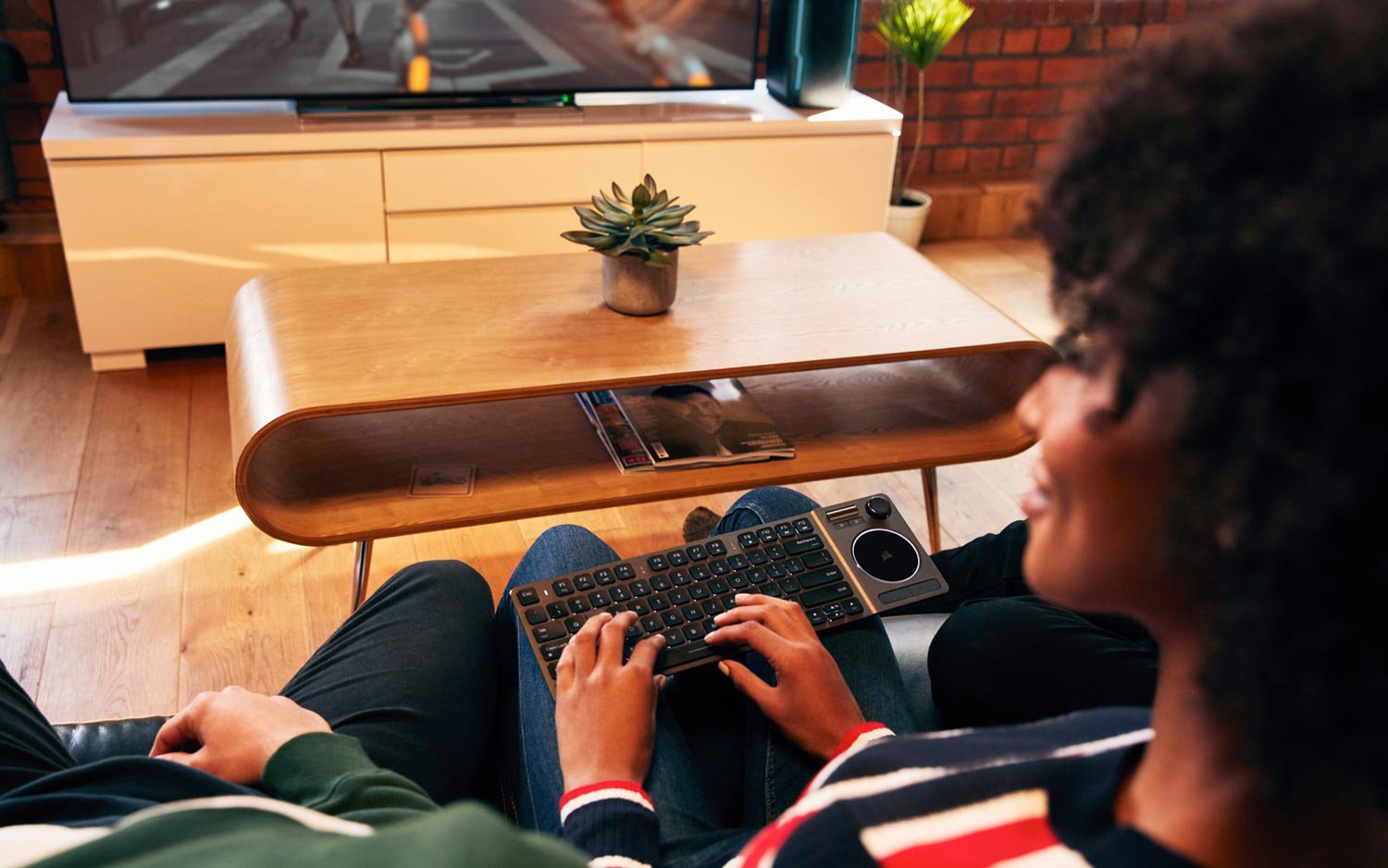
At the same time, the lack of full-size arrow keys and a delete key definitely slowed down my typing and caused a number of errors. The touchpad is a bit on the resistant side; while you can adjust its sensitivity, it's still not nearly as good as just having a mouse.
And that's what I kept thinking as I used the K83: I wish I had a dedicated mouse or a dedicated controller. The hybrid design is interesting, and it's never really been tried before.
But the joystick and trigger buttons don't really help in games. And the touchpad surrounded by mouse buttons isn't really as good as Logitech's approach of just giving you a dedicated column of mouse buttons.
Bottom Line
The K83 demonstrates that there's a very real demand for living room keyboards created for smart TVs. But this device also demonstrates that it's entirely possible to overdesign such a keyboard and drive up the price accordingly.
The K83's joystick is a clever idea, but it doesn't do much in practical terms. The keyboard isn't that comfortable to use as a regular productivity tool, and while versatile, it's no more so than any number of less expensive Bluetooth keyboards.
MORE: Gaming Desktop Buying Guide: 7 Things You Need to Know
In fact, while testing the K83, I kept coming back to the Logitech K600, which is better-designed, more functional and a full $30 cheaper. While the K83 has slightly better keys than the K600, that's about its only major advantage; you could use that $30 to buy a perfectly good Bluetooth controller for all your gaming needs.
While the K83 isn't without its charms, it ultimately fails to make a mark in what is, so far, a very niche market. Unless you live and breathe Corsair, you can probably do without this keyboard.
Credit: Tom's Guide
Marshall Honorof is a senior editor for Tom's Guide, overseeing the site's coverage of gaming hardware and software. He comes from a science writing background, having studied paleomammalogy, biological anthropology, and the history of science and technology. After hours, you can find him practicing taekwondo or doing deep dives on classic sci-fi.

